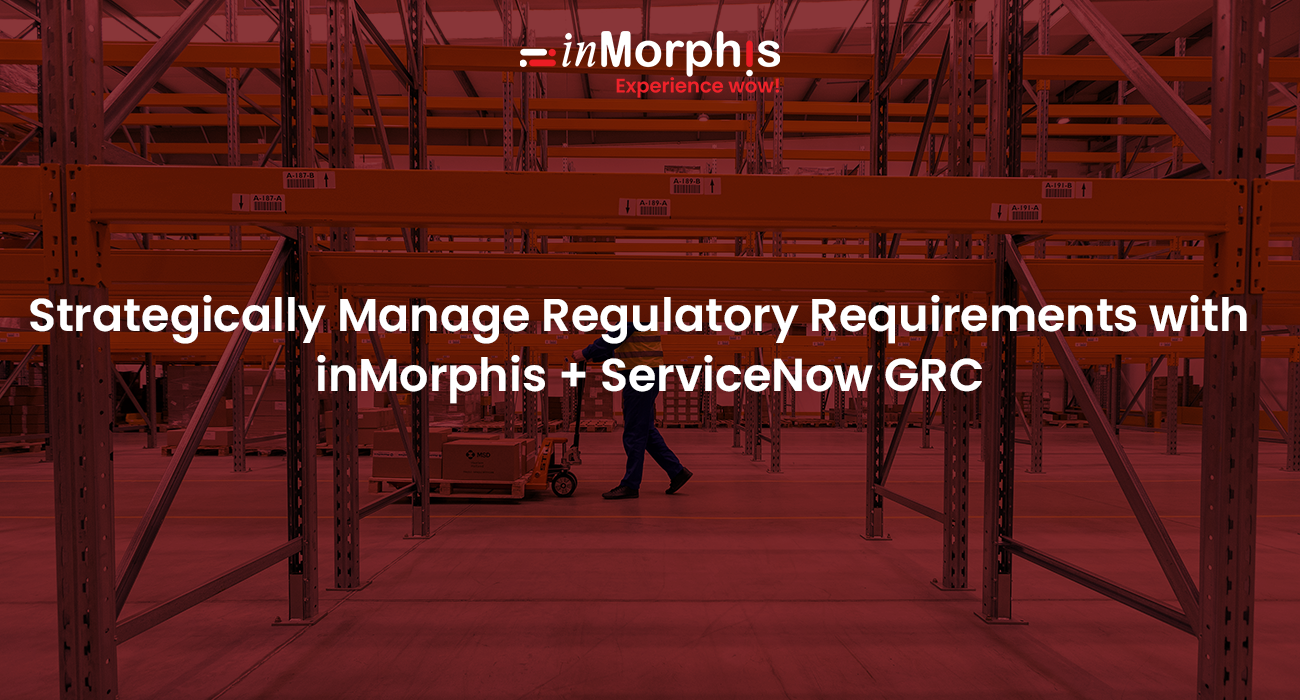Governmental and industry bodies frequently change laws, regulations, and requirements to maintain a regulatory environment. Staying abreast of the growing number and variety of regulations can be daunting for many organizations. In line with data privacy mandates and industry regulations, and federal, state, and local laws, organizations are compelled to establish processes for identifying regulatory requirements and implement measures and suitable processes to maintain compliance risk. ServiceNow GRC's suite of products, which includes Policy and Compliance, provides aggregated data from various regulatory authorities, documents their effects on the organization, creates a sustainable implementation strategy, and provides methods for monitoring it.
ServiceNow GRC Module – A Robust Framework
Manage regulatory taxonomy
Establish a ServiceNow platform-specific internal regulatory taxonomy. For standardization, map the taxonomy with the external taxonomies offered by outside providers of regulatory intelligence. The following design components are included in the internal taxonomy:
- Content-Type
- Jurisdiction
- Regulatory
- Body Sector
- Theme
These items are produced and mapped to the external taxonomy during the setup phase.
Integrate for regulatory intelligence
Connect to third-party regulatory intelligence providers and periodically import the alerts into your ServiceNow instance. Monitor regulatory data in a rapidly and complex changing environment.
Triage regulatory events
Investigate the regulatory developments pertinent to your organization by analyzing the regulatory notifications.
- Assess impact: Utilize adaptable impact assessment approaches to gauge the impact of regulatory events.
- Manage changes: Identify changes that are required. These changes are implemented through the following action task:
- Update underlying GRC objects in the regulatory library, such as policies, processes, risks, and controls.
- Update current citations or fresh import citations from the regulatory library's sources.
View reports and dashboards
Assess the state of regulatory compliance risk by using reports and dashboards. Maintain an audit trail of the compliance activities.
Read More: Bring Organizational Change with GRC
Revolutionize Legacy Methods of Managing Corporate GRC
Regulatory Feeds
Regulatory Intelligence Feeds and API provides a seamless process to receive regulatory information from regulatory bodies, enabling businesses to integrate and act upon all relevant regulatory change and events, risk and control assessments, and policy document review.
Regulatory Intelligence Feeds
Regulatory feeds and API ensure organizations can easily and securely integrate the most comprehensive and authoritative content source into the business workflow process. They have access to more than 2,500 collections of regulatory and legislative information and over 1,000 supervisory organizations' global coverage of regulatory developments through a single interface.
Reduce Manual Task
Facilitate automated/scheduled launch of assessments and shift from a cumbersome manual process to automation. ServiceNow Policy and Compliance process help in shifting the entire Policy and Compliance workflow from tools like SAS EGRC, MS Excel, SharePoint, etc., to a centralized, automated platform.
Workflow
Allows for a smarter and easier workflow to be created as it follows the same standard taxonomy as Regulatory Intelligence. This seamless process ensures the right information to assess any regulatory change that could impact the business.
Real-Time Dashboard
The Policy and Compliance Process provides a platform with real-time dashboards and easy-to-track activities and events. It can track the number of task changes, ownership, task type, and status.
Read More: Skills Required for ServiceNow Developer
ServiceNow GRC Becomes More Powerful with inMorphis
1. Mirror the policy and compliance process for the client
Mirror the customized process for the client and build an API feed to download regulations from the regulator. Selecting directives for implementation and tracking all the change request status until closure.
2. Single source of records
Data sets, like business units/entities, users, and groups, are for all the process requirements.
3. Automation of change tasks and returns
Reducing time and effort for creating tasks and returns for every business unit.
4. Use of CMDB business and IT operational data to monitor against risk tolerance
CMDB data is used as foundation data for the process and is utilized in the module to discourage delicacy.
5. Findings/observations
Centrally track issues closure and their exceptions. Monitor open issues and their dependencies.
GRC to Power Your Business
1. Prioritize Regulatory Obligations
Align/prioritize regulatory directives/obligations depending on their importance and readiness by the business.
2. Analyze
The business and regulatory change implementation team can analyze the impact of the regulatory change prescribed before implementation and decide ahead.
3. Ensure Ownership
We ensure the stakeholders are clear on the ownership of tasks and responsibilities assigned.
4. Track
Track the status of change tasks and quarterly returns at a single dashboard and check the current status.
5. Automation
Automating directives, correspondence and returns implementation and effectiveness tracking, along with reminder and escalation notifications.
6. Centralized Repository
Can access all regulatory & compliance records (circulars/directives) (current and retired/old) in a centralized repository, which helps fulfil the regulatory compliances of Regulatory Agencies.
7. Dashboards
Real-Time Dashboards can be viewed by respective stakeholders, who can perform their assigned tasks and delegate tasks to recovery staff.



